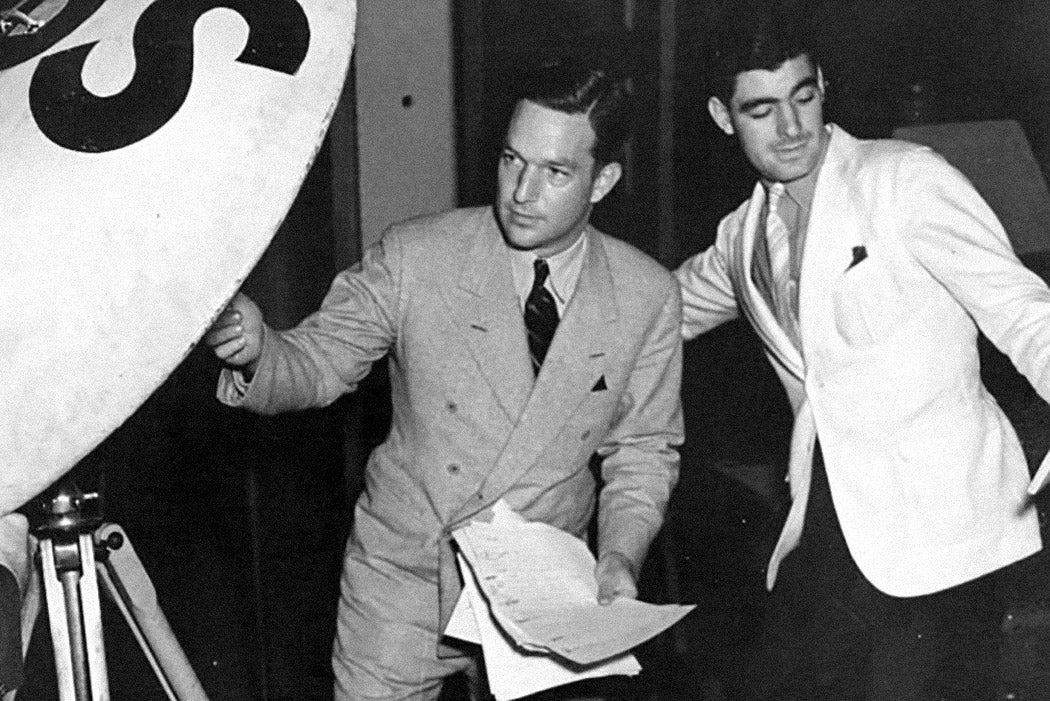Over the past several years—particularly following the premiers of Serial and Criminal in 2014—true crime podcasts have become a core element of the mediascape. Although podcasts themselves are typically considered “new media,” the detailed focus on crime and its investigation for entertainment purposes isn’t new at all. In fact, dramatizations of true crime were an essential part of popular culture between 1926 and 1950, the “golden age” of network radio.
In addition to numerous shows featuring crime fiction, from 1929 to 1930, listeners could—and did—tune in to listen to True Detective Mysteries, based on a magazine of the same name. In 1947, they heard investigations unfold on Call the Police, Deadline Mystery, and Did Justice Triumph?, all purporting to at least be inspired by actual criminal cases. And in between, they listened and responded to the detailed reenactments broadcast on Gang Busters, a true crime drama that often featured bandits as the main characters.
Running from 1936 to 1957, Gang Busters was notable for its sympathetic portrayals of people who had turned to a life of crime out of desperation. The broadcasts often featured “poor bandits, witnesses, and victims,” with plots that targeted an audience that came from a similarly impoverished background. As historian Elena Razlogova writes,
Gang Busters appealed most to working-class and nonwhite men and children. Among ten thousand Minnesota men questioned in December 1936 and January 1937, only 20 percent of professionals but 45 percent of “slightly skilled” workers listened to Gang Busters. A California survey found that while wealthy kids preferred historical plays and middle-class kids soap operas, low-income “Oriental” and Mexican children favored crime and mystery stories like Gang Busters.
At the behest of advertisers, producers, and the network, the writers of Gang Busters were told to warn the listeners that committing crimes was not something to be encouraged. But “Gang Busters benefited from the popular appeal of the gory details, the first-person eyewitness accounts, and the tough masculine style of crime writing,” Razlogova explains. More often than not, the writers “tabled advertisers’ requests to tone down details of crimes and hired writers who cited pulp journalism among their credentials.”
As with some podcasts today, Gang Busters depended on interviews with people who had witnessed the [alleged] crimes. But true crime is a complicated genre; those involved often disagree on the details, particularly when those details were later played for entertainment. This is especially true for the families of victims.
Disagreements on how the show portrayed the victims of one particular crime, a shoot-out in Oklahoma featuring two “small-time armed robbers,” George Sands and Leon Siler, led to the show’s first major scandal.
Having fled after a bank heist, Sands and Siler holed up in Comanche County in a farmhouse owned by Adrian Medrano. A farmer of Mexican descent, Medrano was killed when—according to the police—a shooting broke out between law enforcement and the fleeing bandits. During the shooting, Medrano was hit by a bullet and killed. According to the police on the scene, Medrano was an accidental victim who unfortunately ended up in the line of fire. Gang Busters investigator George Norris claimed that “Medrano was killed by the officers by mistake because they thought he was an Indian and a member of the gang.” This was the narrative that played out in a February 1939 reenactment of the event on the show.
According to Razlogova, Medrano’s wife was furious with the broadcast; she believed “the lawmen deliberately shot her husband.” It wasn’t an accident, it wasn’t crossfire. He was killed because the law had mistaken him for a “Choctaw criminal on the loose.” Other eyewitnesses supported his wife’s account.
That Medrano’s death was styled as an accident was bad enough, but the police (and then Gang Busters) also fell back on harmful stereotypes, depicting Medrano and the local Indigenous people as “primitive” and prone to criminality.
Listeners, particularly those from a rural background and who sympathized with the murdered Medrano, turned against the show.
Weekly Newsletter
“Having seen officers mistake Adrian Medrano for an Indian bandit, shoot him, and cover up the murder, farmers in turn discovered parallels between lawmen’s and radio men’s indifference to their lives and opinions,” writes Razlogova. The dramatization highlighted class and race inequities, inspiring “working-class and nonwhite listeners and informants to articulate popular dissatisfaction with the emerging impersonal corporate power in the broadcasting industry.” The indifference to what was being perceived as the real crime (Medrano’s murder) shown by Gang Busters led farmers to “draw parallels between injustices in media and society.”
Though the show endured until the late 1950s, the viewership dropped in 1943, in part due to the Medrano episode. When older episodes of Gang Busters were re-run in the 1960s, “the show flopped as police propaganda,” notes Razlogova.
Support JSTOR Daily! Join our new membership program on Patreon today.







